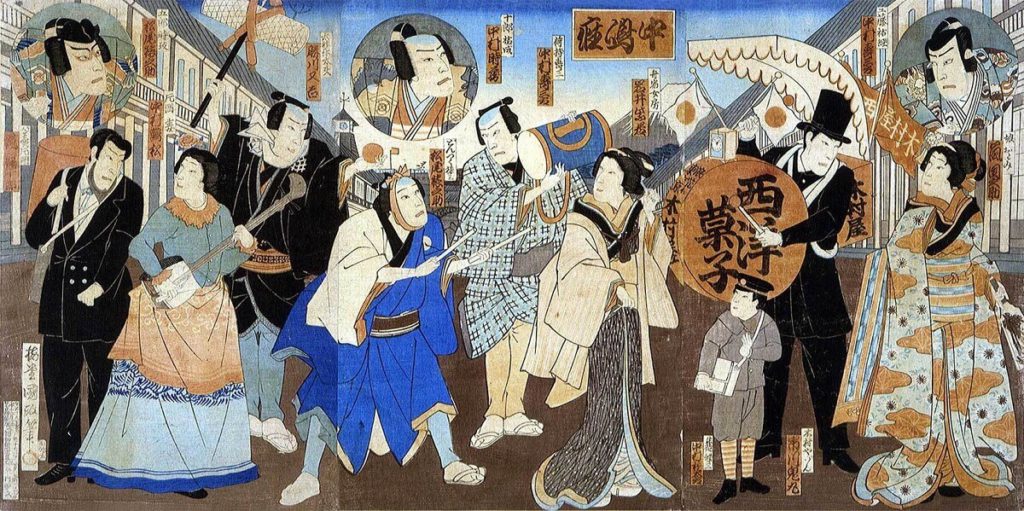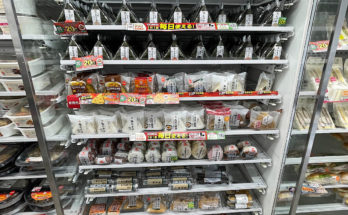Generally speaking, “anpan” is a small bun filled with red bean paste which has been quite popular as a sweets amongst Japanese people. “An” means the filling inside the bread, and “pan” means bread, originally derived from the Portuguese word “pão.”
Bread is widely accepted as a staple food in the world, however in Japan, it took quite a long time for people to eat bread instead of rice, especially as a staple food.
A brief overview of the bread in Japan
In the 1540s, bread came to Japan with ships of Portuguese missionaries. However, Japanese people have a strong affinity to rice as their staple food, so the production of bread was limited at that time. In the 1840s, bread was prepared as army provisions, but still not for ordinary daily meals.

In the late Edo period (around the 1860s), France had given military support to the Tokugawa Shogunate. In the early Meiji period (starting from 1868), Great Britain had aided the Japanese new government. Because of these relationships, people from France and Britain started living in Japan, especially in the Yokohama area in the Kanto region.
For their daily lives in Japan, bakery shops had started their business in Yokohama. As a result, two typical types of bread, French baguettes and English white bread, were introduced to Japanese people.

Their technology and recipes of bread production were gradually handed down to Japanese people. In this process, bakery shops owned by Japanese baker started their business.

Around the 1870s bread appeared on the Japanese market, however, it wasn’t able to gain great popularity. Probably the different eating habits made it difficult for Japanese people to consume bread mainly as their staple food.
Bread as a confectionary (西洋菓子)

Kimura Yasuhei (木村安兵衛1817-1889), the founder of the Kimuraya Bakery, was originally a samurai warrior in the Edo period (1603-1868). After the start of the Meiji restoration in Japan, he had to change his career into being a baker.
At that time, eating bread was not very common for ordinary people, probably because of its sour taste. K. Yasubei found the idea from manju, a traditional Japanese flour-based confection, and used rice cultured yeast called sakadane (酒種) to make his bread. This means he treated bread as a westernized confection (西洋菓子) for refreshment, not as a dish served at dinner.
This combination made his bread more familiar to the Japanese taste. Like manju, he put red bean paste into the bun. This is the birth of the first anpan. K. Yasubei also added salted cherry blossoms on the top of the bun. It was called Sakura Anpan.

Royal recognition
Yamaoka Tesshu (山岡鉄舟1836-1888), an ex-samurai warrior who played an important role in the Meiji restoration in Japan, was a close friend of Kimura Yasubei. Mr. Yamaoka tasted the anpan at Kimuraya Bakery, valued its taste, and soon recommended this anpan to Emperor Meiji.
Emperor Meiji, Mutsuhito (明治天皇、睦仁) and his wife accepted this new type of bread and ordered Kimura Yasubei to bring anpan to their palace regularly. This royal recognition of anpan made this bun more famous and popular.
Please check these links:
https://en.wikipedia.org/wiki/Yamaoka_Tessh%C5%AB
https://en.wikipedia.org/wiki/Emperor_Meiji
Anpan gained great popularity and was recognized as one of the nine symbols of westernization at that time.

Newspapers, mail delivery system,
gas street lights, steamboats,
photographs, exhibitions, balloons, steamtrains, and anpan
Dawn of the Japanese bread
The success of anpan at Kimuraya bakery accelerated the birth of bread created in Japan.
After the hit of anpan, Kimuraya bakery launched Jam Pan and steamed cake. Since Kimuraya had been creating new types of Japanese bread, other bakeries pursued this creation: please check the pictures below.

curry pan, croquet pan, melon pan, katsu sandwiches,
chocolate cornet, yakisoba (fried noodles) pan, pizza toast, and steamed cake
Evolution of Anpan
Anpan itself has kept evolving and kept its status. With the efforts of creative bakers in Japan, anpan has long been loved not only by the domestic consumers but also by the people who come to visit this country.

Conclusion
Anpan has been one of the top runners as a refreshment or confectionery since its birth. And even now it is one of the representatives of Japanese culinary culture.
It is affordable, has well balanced texture, and has been popular with all generations. Those are the fantastic, stunning, and awesome facts to share.
Please check this link:
https://youtu.be/b-UZGT_SfkE

National Tour Guide (English), Eiken Grade 1, TOEIC A rank. Have been studying and teaching English for over 30 years.





 HTJ has a YouTube page! Check it out
HTJ has a YouTube page! Check it out